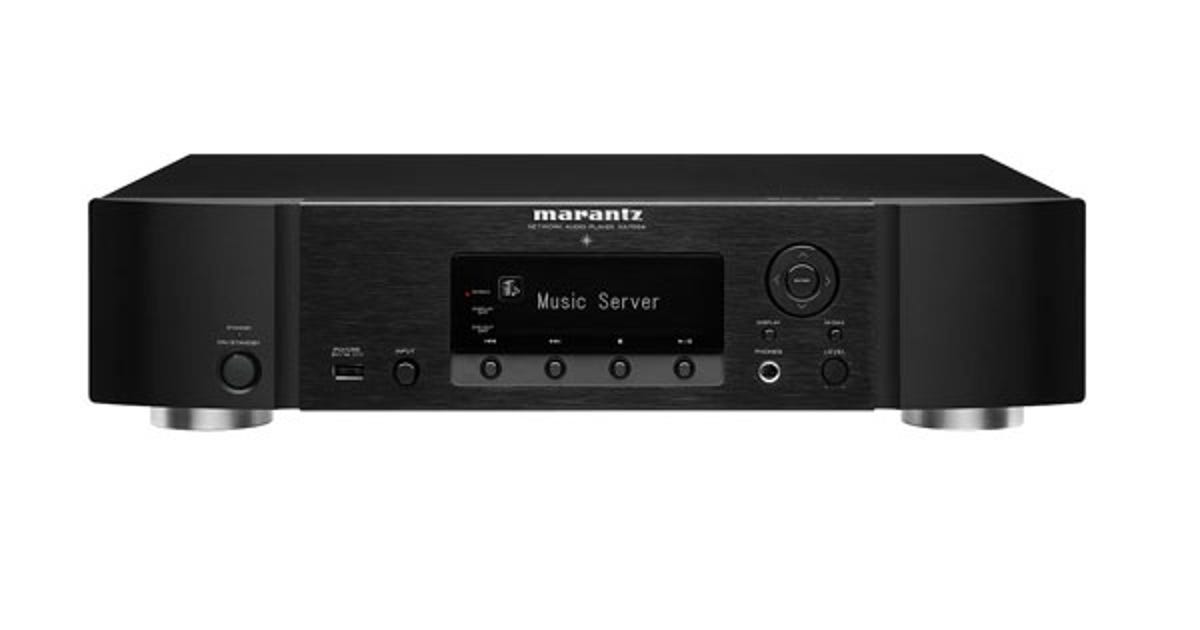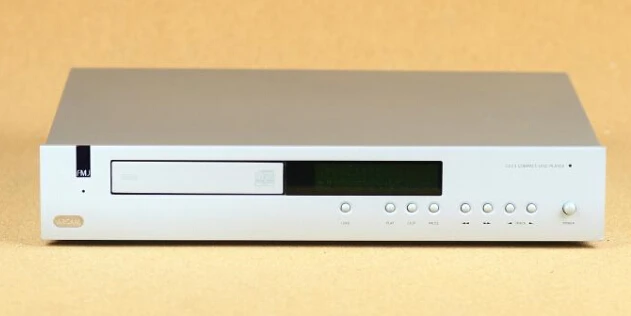The Marantz CD73 is probably not for you if you want all the bells and whistles a CD player can possibly have. The CD73, on the other hand, may be just what you’re searching for if you want faultless Compact Disc replication, superior error-correction capabilities, exceptional shock resistance, and a CD player that looks attractive and is simple to use. As with many Marantz products, the business has given this, their first CD player, its own unique touch.
Of course, there’s the unit’s signature gold-anodized aluminium front-panel casting, which adds a touch of class. Beyond that, Marantz engineers have managed to pack the CD73 with a slew of programming tools and capabilities while keeping the front panel uncluttered and intimidating. Up to 15 separate selections can be programmed to play in any order (assuming there are that many “tracks” on the disc being played).
The programmed selections, as well as the full disc, can be played over and over again if desired. If you change your mind after the program has started, you can cancel any track you want to skip, and you can also cancel the entire program with a single button press. A touch of another button moves you to the next pre-programmed or sequential track on the disc being played if you feel you’ve had enough of a certain selection. Front-panel controls also control rapid forward and fast reverse movement of the laser pickup, however there is no audible sound during these fast modes.
The proportions of the front-loading Marantz CD73 are similar to those of a modern cassette deck. The CD73 lacks “repeat” capability and an elapsed-time counter, both of which are common on CD players. There are no options for index cueing or time cueing into a specific track. While a remote control is not currently available for this model, Marantz promises to release one in the future, and the presence of two more connections on the back panel suggests that it will be a wired type rather than an infrared when it does. Only four functionalities of the player will be controlled via the remote, according to Marantz.
At the far left of the machine is a power on/off button with an associated indicator light, as well as the “Open/Close” button for the disc container. When the “Open/ Close” button is pressed, the entire disc drawer slides out, and the front face of the door swings down at a 45° angle, while the retaining arm (which holds the disc in place during play) swings up and out of the way, making disc loading even easier. All of the touch controls for rapid rewind, fast forward, “Next Program/Play,” and “Pause” are located along the lower edge of the drawer’s front face.
A huge display window takes up the most of the right part of the front panel. 15 small green LEDs are arranged in a horizontal row along the top of the display area, which glow behind clearly visible digits 1 through 15. All 15 LEDs light up when a disc is inserted and the drawer is closed. Each of these numerals has corresponding orange dots of light that light up to indicate which track is currently being played. The green lights fade out one by one as the game advances, while the orange light goes along to signify the next track being played. “Stop/All Cancel,” “Select,” “Preset,” “Repeat,” and “Cancel” are among the programming buttons below the display area.
These are used to program disc playback in any of the previously mentioned ways. The indicator lights above the buttons show not just what is going on, but also what is being programmed. To play tracks 2, 4, and 7 in that order, press the “Select” button to advance the orange indicator light to track 2. Until you pressed the “Preset” button, the orange light would blink on and off, indicating that the instruction had been entered into the player’s memory circuits. You’d then hit the “Select” button again, this time moving the bottom light until it flashes beneath the number 4, after which you’d press “Preset” once more. The same approach would be used to program track 7 to play. Then, on the disc drawer, you’d press the “Play” button. All bar the selected track number lights would go off, the orange light would change to 2 (the first desired track to be played), and only the green LEDs 2, 4, and 7 would remain lit. The Marantz CD73’s back panel includes the standard pair of audio output jacks (output level is not adjustable) as well as a pair of connections for the optional four-function wired remote control device.
Without breaking a beat, the CD Marantz 73 played through all of my test disc’s artificial faults. This has only been done by a few players.
My Philips test disc’s sweep signals ranged from 20 Hz to 20 kHz. Within this band, the frequency response never departed from the ideal by more than 0.3 dB. The vertical scale has been enlarged in this illustration so that each division equals 2 dB instead of the typical 10 dB. If you used the less sensitive scale, all you’d see is a straight line. Harmonic distortion for maximum re- corded output was 0.0045 percent at mid-frequencies, rising only marginally to 0.008 percent at high frequencies.
At a recorded level of -24 dB, distortion at mid-frequencies grew to 0.025 percent, while distortion at 1 kHz (actually, the test frequency is 997 Hz) was 0.045 percent at a recorded level of -30 dB. From the 0 – dB reference level down to -80 dB, output linearity was accurate to within 0.1 dB, below which it became difficult to read output with any degree of accuracy due to equipment ‘irritations. For low and mid-frequency frequencies, stereo separation was better than 85 dB, dropping to 78 dB at 10 kHz and 74 dB at 20 kHz. At highest recorded output level, intermodulation distortion was 0.004 percent, increasing to 0.03 percent at – 20 dB recorded level. The unweighted signal-to-noise ratio was 97 dB, but after an A-weighting network was added in series with the measuring device, it increased to 107 dB.
The structure of a 1 kHz square wave reproduced by the Marantz CD73 was identical to that reproduced by other CD players that use pre-D/A digital filtering and oversampling (particularly those manufactured by Philips for sale by Magnavox in this country).
In many ways, the Marantz CD73 mimics Magnavox’s top player, both physically and in terms of the features it includes and those it leaves out. If you haven’t guessed, the Marantz CD73 is really made for Marantz by Philips, with Marantz engineers developing the layout and performance qualities first.
The phase error was checked using a phase-check signal on the Philips test disc, which consisted of a 2 kHz sine wave duplicated by one channel output and a 20 kHz sine wave signal on the other channel. When there is no phase error, the high-frequency signal’s positive axis crossing should correspond to the low-frequency signal’s positive axis crossing. When these signals are duplicated by the Marantz CD73, this is almost exactly what happens.
As I’ve noted previously in these evaluations, many critical listeners believe that better phase precision contributes to improved musical reproduction accuracy, particularly in high-frequency reproduction. I utilized a specific error-correction test disc to see how well the player can ignore minor (and not-so-little) disc flaws. An opaque wedge of increasing width, several artificial opaque “dots” (representing dust particles), and a simulated smear are all included on the test disc. Without skipping a beat, the Marantz CD73 was able to play through all of these flaws.
This implies it could fix errors caused by impediments as small as 900 microns in width or diameter, and it ignored the simulated semi-opaque fingerprint smear altogether. Only a few CD players I’ve tested have achieved this trick, one of which is… the Magnavox! When I tapped the CD73’s surface or side panels, it was relatively immune to mistracking. Mistracking was caused by rather hard hits to the outside shell.
I must admit that having only 15 customizable selections on a CD player can be a bit of a pain when testing such goods, especially because one of my test discs has 27 usable test bands while the other has 41. Of course, switching to track 15 and then selecting the “Next Program” button gradually, keeping count (or watching an oscilloscope) until the necessary test signal is achieved on the Marantz player is doable, but it’s a bit inconvenient. This issue was immediately forgotten when it was time to listen to music. There are few classical CDs with more than 15 tracks (with the possible exception of some early sampler discs), and even fewer pop albums have that many choices.
With that tiny quibble out of the way, I can confirm to the fact that the Marantz CD73 is a fantastic performer in every aspect, both in terms of sound (provided you have some quality source material, which is no longer an issue) and in terms of ease of use and reliability. Scanning forward to discover a high-numbered track takes a while (12 seconds to get to track 15 from a “cold” start at track 1), but I doubt many of us would program play that way. Most of the time, I imagine, we just want to listen to a Compact Disc straight through, and I can’t think of another CD player that does this better than Marantz’s debut entry.







